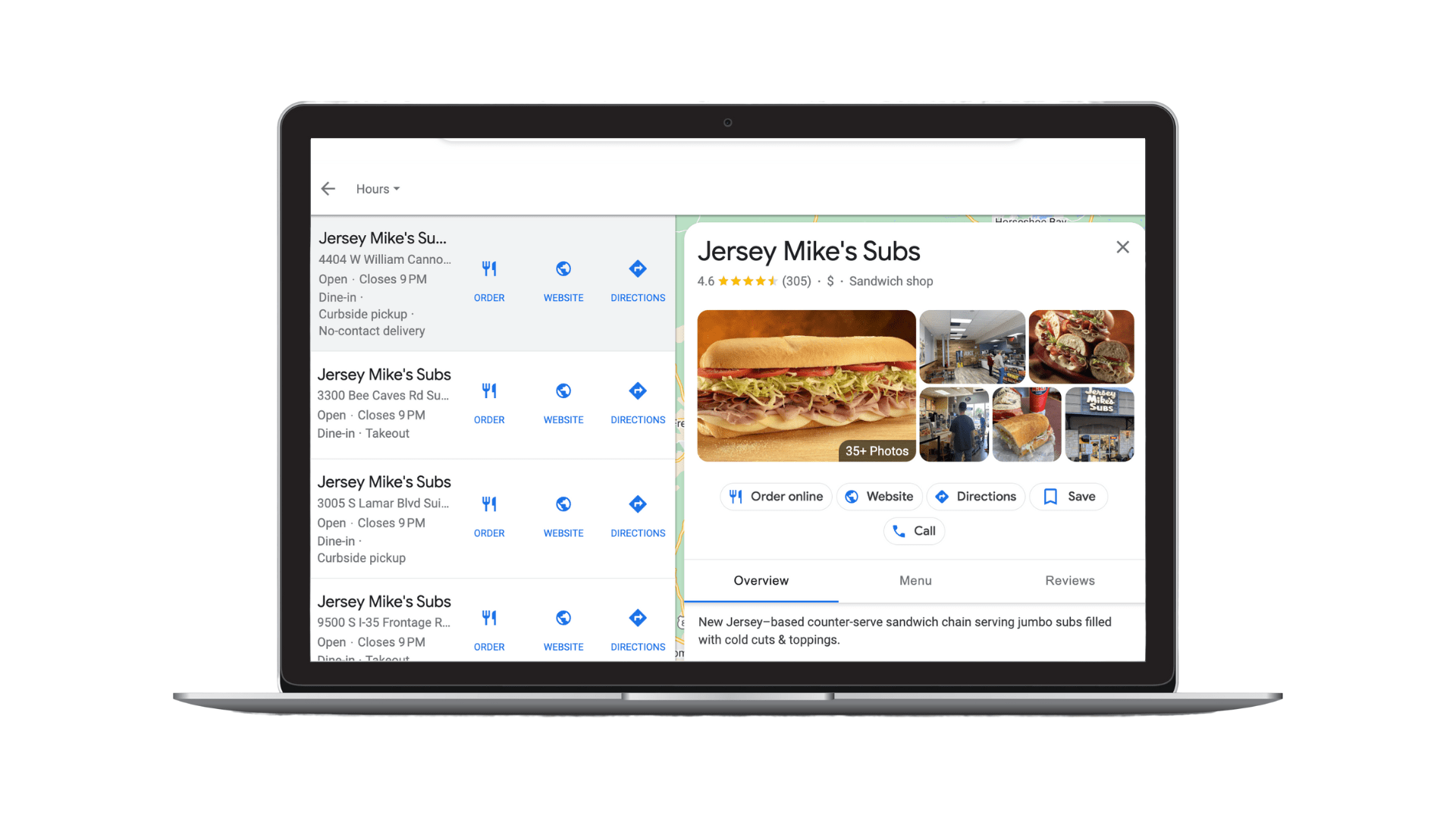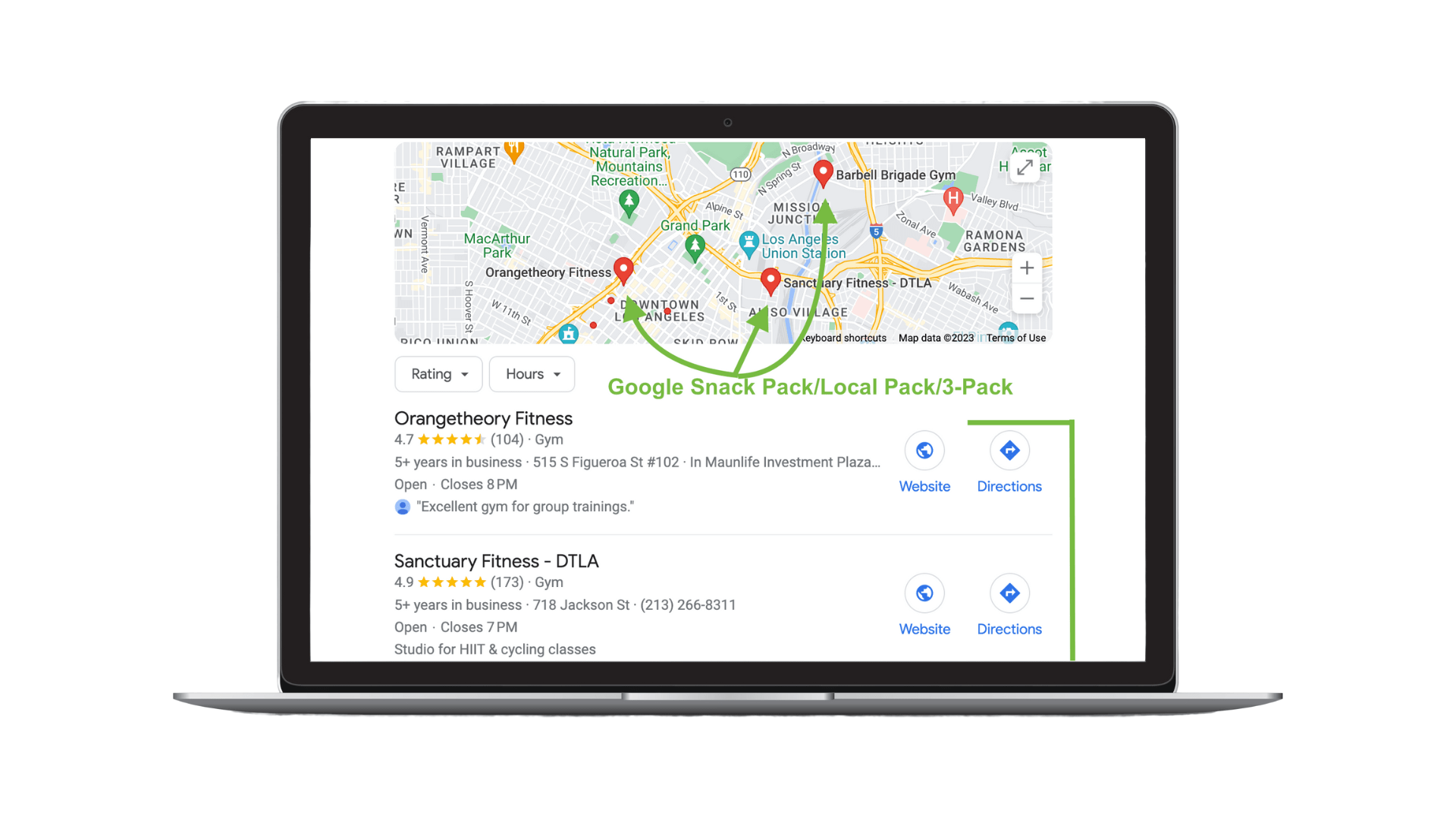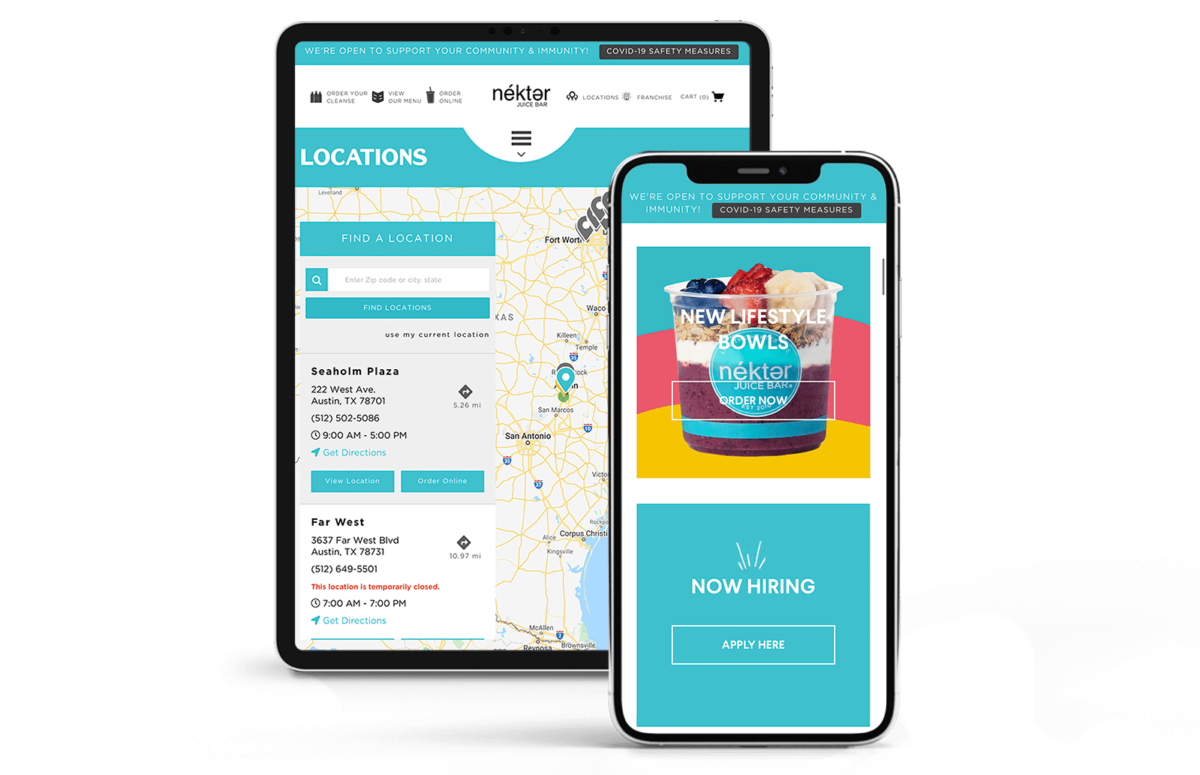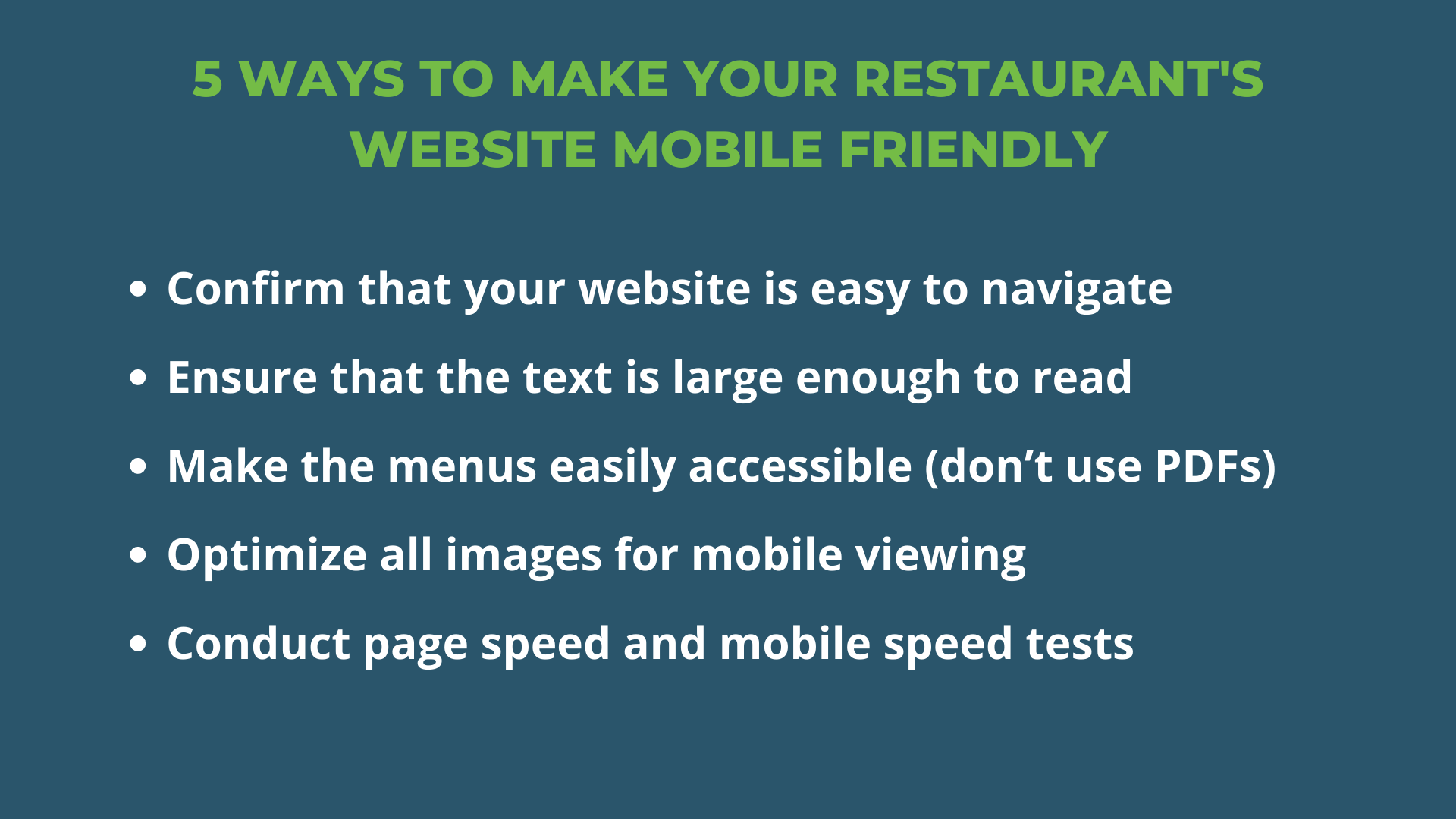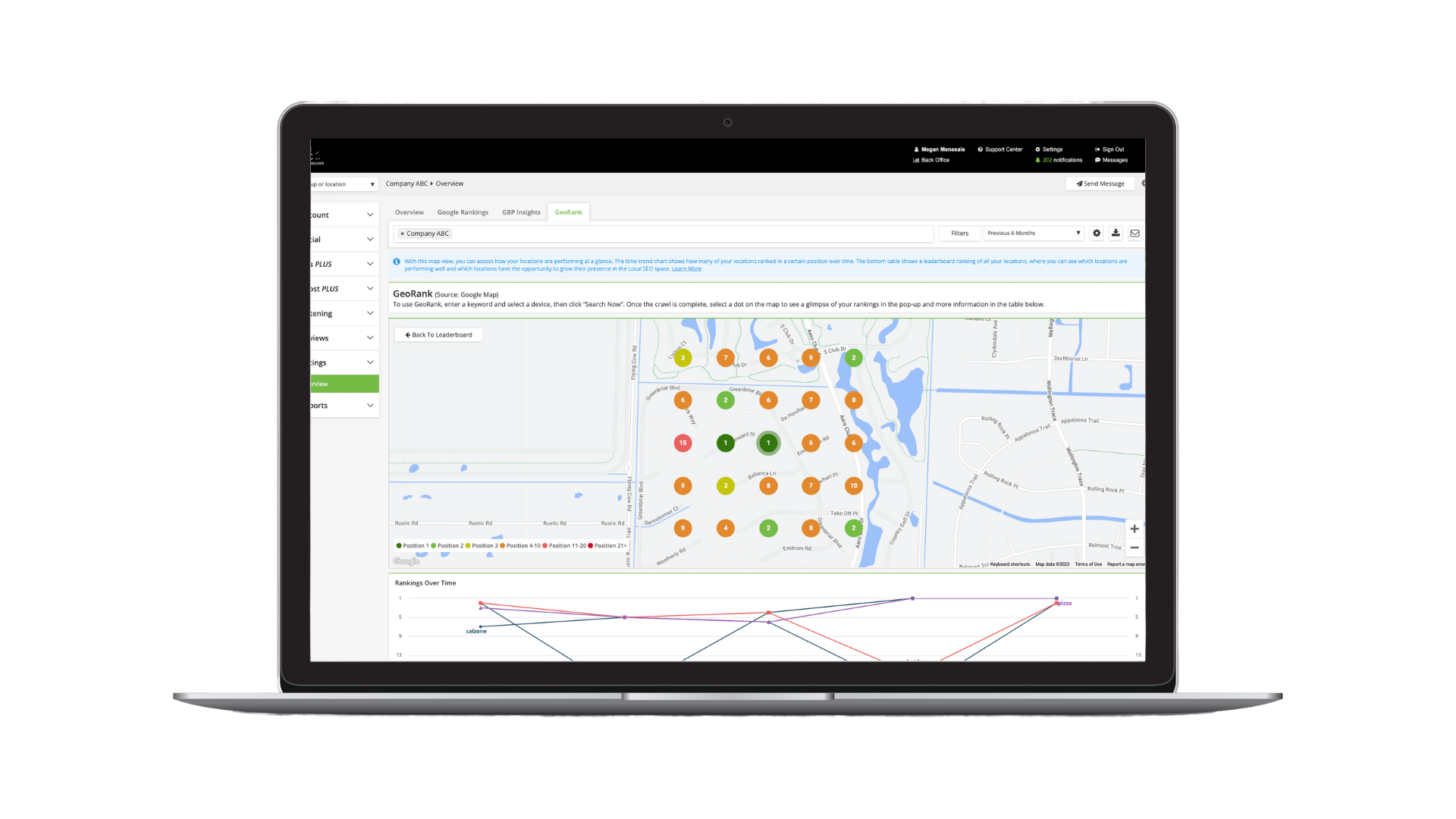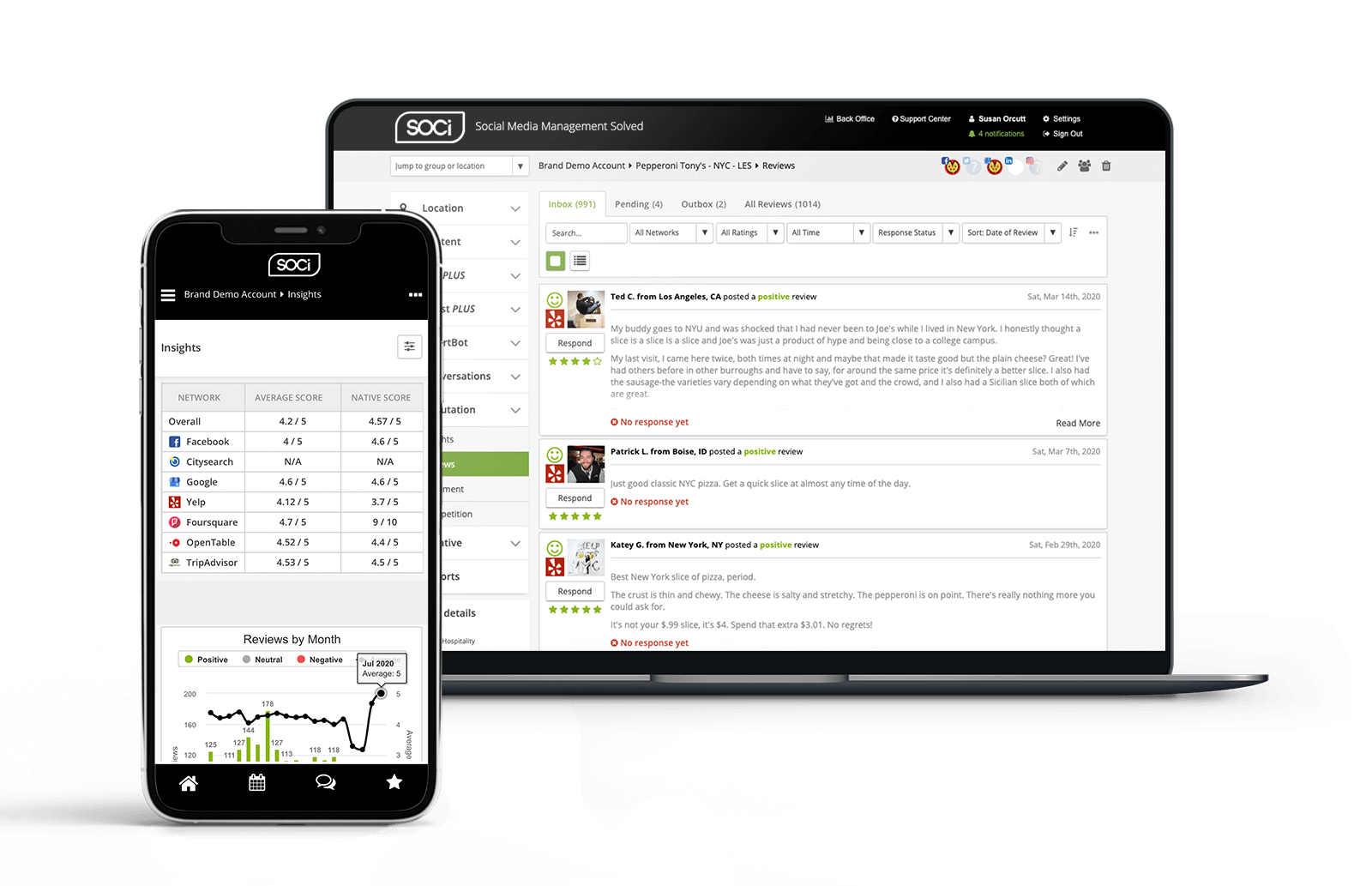Win More Diners With These 9 Killer Restaurant SEO Tips
Is your restaurant brand easily accessible online? If not, you’re likely losing local diners to competitors. An easy way to gain in-person and carry-out diners is to strengthen your restaurant’s SEO (search engine optimization).
Improving your restaurant SEO means optimizing your restaurant’s online presence to appear on Google and other search engines when people search for where to eat.
While SEO might seem technical initially, we’ll make it easy to digest and understand.
At SOCi, we’ve analyzed over 8,600 restaurant locations and 25,600 location pages — so we know how to bolster your restaurant’s online presence.
This blog will review nine restaurant SEO tactics to help your restaurant brand gain more online and in-person traffic. To further improve your restaurant brand’s online presence, you can also see how your restaurant’s localized marketing efforts stack up against the top restaurant brands in localized marketing in our 2022 Localized Marketing Benchmark Report.
Why Your Restaurant Brand Should Care About SEO
Table of Contents
Why should you care about restaurant SEO in the first place? Today, over 90 percent of consumers use digital tools to find information about a local business. You’re likely missing out on potential diners if you do not appear in these searches.
SEO can help your restaurant brand:
- Improve brand awareness
- Increase traffic to your website
- Expand reservations and online orders
- Strengthen customer engagement
- Grow your profit and business
Below, we’ll dive into nine tactics that will help hungry diners find your restaurant online and boost foot traffic.
1. Optimize for Local SEO
As a restaurant brand, you must focus on local SEO, also called local search, since most diners are searching for places to eat in their current location or an area they plan to visit soon.
To rank well in local search, you’ll need to optimize your restaurant listings on the three most popular platforms: Google, Yelp, and Facebook. Conducting a local SEO audit will allow you to see where you can improve.
You’ll also need to standardize your business information across all major directories, especially one’s diners often visit, such as:
- Google Business Profile
- Yelp
- OpenTable
- GrubHub
- TripAdvisor
In addition, your NAP (name, address, and phone) citations must be correct and consistent across all data sources and local directories that mention your business.
If your NAP citations are incorrectly listed, contact one of the four major data aggregation companies (Acxiom, Infogroup, Localeze, and Factual) with the correct NAP data. You can also use SOCi Listings to manage your NAP citations and other essential business information for all your listings; more on this later.
Focusing on local SEO demonstrates to Google and other search engines that your restaurant is a creditable business and helps your restaurant appear above competitors on the search engine results page (SERP).
Moreover, Google allows companies to include more information in their local listings. The more information you have in your listings, the better user experience searchers will have, which leads to a higher click-through rate.
For a more in-depth look at local SEO strategy tactics, download our Local SEO Guide today!
2. Audit Your Google Business Profile
A Google Business Profile (GBP) is a crucial marketing tool for local businesses — especially those in the restaurant industry. Your Google Profile is the most important listing since Google owns approximately 93 percent of the search engine market share.
Below is an example of one of Jersey Mike’s Subs’ GBPs.
A GBP lets your restaurant connect with customers on Google Search and Maps. In fact, without a GBP, it’s impossible to rank on the Google 3-Pack.
Ranking in the Google 3-Pack increases your visibility tremendously. Our research found that businesses in the 3-Pack receive 126 percent more traffic than businesses ranked 4-10.
If you haven’t set up your GBP across business locations, read our guide to claiming your Google listing and set up your Profile as soon as possible.
3. Develop a Keyword Plan
Having a keyword plan is another vital feature of restaurant SEO. A keyword plan will help you target specific search terms or keywords your restaurant’s website can rank for on search engines.
There are two main types of keyword searches for restaurants.
Locally Modified:
Locally modified or geographical searches often contain a city, town, neighborhood, or ‘near me.’ For example, ‘Burgers Austin, TX,’ ‘sushi in Brooklyn,’ and ‘pizza restaurants near me’ are locally modified search strings or keywords.
Here’s an example of how you might target locally modified search queries.
If you’re a pizza restaurant in New Orleans, you’ll want to target the keywords ‘pizza party New Orleans,’ ‘pizza restaurant New Orleans,’ ‘family dinner Uptown,’ or ‘pizza French Quarter.’
Strategically targeting these locally modified search queries and implementing them on your website and throughout your content will help boost your online visibility and bring in local diners.
Implicitly Local:
Implicitly local searches rely on search engines’ ability to know someone’s current location and will automatically display local results.
Someone might search for ‘chicken wings,’ ‘best Mexican restaurant,’ or ‘steakhouse.’ Your business will likely appear on the search engine if you serve or specialize in one of these items and you’ve added keywords to your website and listings.
Sticking with the same pizza shop in New Orleans example from earlier, you might target the keywords ‘pizza party,’ ‘best pizza,’ or ‘pizza for lunch’ for implicitly local searches.
Doing keyword research and targeting locally modified and implicity local keywords will help your restaurant rank ahead of competitors and gain diners.
To start your keyword research, you can use Google Keyword Planner, a free extension of Google Ads, or use paid keyword tools such as Ahrefs or Semrush.
4. Update On-Page SEO
A vital part of restaurant SEO is ensuring that search engines can index your website. Only indexed pages, those visited by the Google crawler or other search crawlers, appear on the SERP when someone searches a specific query on Google or other search engines.
If your pages aren’t indexed, neither Google nor anyone online can find them. You can check indexing issues for free with Google Search Console. This guide to indexing on Google will be helpful.
You might be wondering how Google indexes pages. They “crawl” pages for keywords, metadata, and other related signals.
Thus, optimizing your on-page SEO is essential, which you can do with the following tactics:
Title Tags:
A title tag is an HTML tag that labels your page for search engines and people. In general, title tags should:
- Contain the targeted keyword(s)
- Remain short, under 60 characters
- Be attention-grabbing by communicating a benefit
Meta Description:
The meta description appears on the SERP under your title tag. It should provide a brief summary of your web page. Think of it as a tweet or hook enticing someone to click on your link.
Meta descriptions should follow these guidelines:
- 50-160 characters in length
- Include the targeted keyword
- Act as an advertisement to lure searchers
URLs:
Each of your website’s pages (home, menu, landing, blog, etc.) should have a short and descriptive URL. Your URLs should follow these protocols:
- Include the targeted keyword
- Include words people can quickly comprehend
- Don’t include special characters, capitalized letters, or the text, “index.html,” or spaces and underscores
Images:
Your website will likely contain a variety of images of your restaurant’s ambiance and food. However, it’s crucial to name images appropriately and use descriptive alt text. Here are a few tricks to optimize your web pages’ images:
- Compress your images to reduce their size and increase page speed.
- Name images after what they’re documenting. For example, a menu item would be ‘Jersey Mike’s Portobello Cheese Steak.’
- Include alt text, which is a detailed description of an image.
These on-page SEO and indexing tips will improve your click-through rates and allow search engines, and therefore people, to more easily recognize your restaurant’s website and pages.
5. Be Mobile-Friendly
Mobile isn’t going anywhere. Today, people use their mobile devices to research restaurants, place to-go orders, and create reservations. Nearly 9 out of 10 people search for a local business using their phone at least once a week. If your website isn’t mobile-friendly, you’re probably losing customers.
According to Google, 76 percent of all local smartphone searches led to an in-store visit within 24 hours.
6. Encourage and Address Reviews
Did you know that 77 percent of consumers ‘always’ or ‘regularly’ read online reviews when searching for local businesses? Similarly, only two percent of consumers ‘never’ read an online review when browsing local companies.
People are reading reviews, but how much do they impact SEO? According to our Top Ranking and Conversion Factors in Local Search report, GBPs ranked 1-3 have 21 percent more reviews than those ranked 4-10. According to GlobeNewswire, 98 percent of consumers feel that reviews are essential when making purchase decisions.
Therefore, you must encourage patrons to leave reviews after dining in your restaurants. To ensure you’re getting positive reviews, you should provide diners with an outstanding experience!
The more positive reviews and high star ratings, the higher your website’s click-through rate is. This leads to more foot traffic to your restaurant.
Not only is receiving reviews essential, but so is replying to them. On average, in 2022, multi-location restaurant brands only responded to 33 percent of their Google reviews and 19 percent of their reviews on Yelp.
This low response rate allows your restaurant brand to get ahead of the competition by responding to positive and negative reviews in a timely and personalized manner.
Download The Online Reputation Management Guide for Restaurant Brands for more information on how to respond to reviews and effectively manage your restaurant’s online reputation.
7. Interact With Diners on Social Media
Diners rely heavily on social media when selecting a restaurant. Research shows that 72 percent of diners use Facebook to decide which restaurant to visit.
Thus, a solid social media presence can only help your localized marketing efforts. Localized marketing and SEO go hand in hand. Your social media should drive potential diners to your site and help amplify your brand awareness.
Below are the best social media practices for restaurants:
Images:
The saying, ‘you eat with your eyes,’ holds true. It’s important to post images of popular or new dishes on visually-driven platforms like Instagram and Facebook. You should also post pictures of your restaurant’s atmosphere and decor. These images help diners imagine themselves eating there.
Hashtags:
Have one or two prominent branded hashtags that you and your diners can post on social media. Hashtags can help spread your brand name and increase your overall reach.
Updates:
Post critical updates such as new menu items or intriguing events. These posts can build up hype and excitement — especially with loyal followers. You should also post any hour of operations changes, especially around holidays.
Lastly, it’s important to remember the power of local! It’s beneficial to include additional localized content, such as photos highlighting your employee of the month or partnerships with other local businesses.
Check out our Localized Social ContentGuide for a more in-depth look at what it takes to dominate your local social strategy and boost SEO.
8. Boost Your Authority by Gaining Links
Backlinks are links from other sites that link to your website. Backlinks are an important ranking factor for search engines. Multiple backlinks from high-quality sites signify to search engines that your website and brand are trustworthy — which will move you up their rankings.
You’re likely wondering how to get backlinks. Here are a few backlink strategies:
- Ask your partners and suppliers to link to your website on their blogs or newsletters.
- Ask online food publications or review sites to link to your restaurant, especially listicle articles like “The Top 10 Italian Restaurants in San Diego.”
- Request food bloggers to visit your restaurant and write reviews.
- Support local charities and receive backlinks and media coverage from these partnerships or events.
Note that bad backlinks do exist. These stem from irrelevant or spammy domains and can hurt your SEO efforts. Read our article on how to identify and remove bad backlinks.
9. Improve Your Schema Markup and Rich Snippets
Similar to on-page SEO, your schema helps search engines recognize your website. Schema is a data framework that allows search engines to learn more about your site. For restaurants, it helps search engines recognize and differentiate your menus, hours of operation, and reviews.
Use the Schema.org restaurant library to confirm if your restaurant’s website includes the necessary schema properties. You can also use Google’s free Structured Data Testing tool.
Note that you’ll likely want to use a web developer and a web content management system with robust plugins to change your schema correctly.
Now that you know how to improve your restaurant SEO, it’s time to implement these tactics. We understand if you feel overwhelmed managing a restaurant brand’s SEO strategy across all your business locations, but it doesn’t have to be!
Use an All-in-One Marketing Platform
SOCi’s team and products can help your restaurant brand manage its SEO tactics at the corporate level while allowing local restaurants the ability to manage their local listings, social media, and review response.
From local listings to local pages to reputation management and local social, SOCi has you covered.
SOCi Listings allows you to manage your NAP and other business information across all major directories. SOCi Listings now includes SOCi GeoRank, allowing you to know which keywords your restaurants and competitors rank for at the local, regional, and national levels.
SOCi Social allows corporate and local teams to manage and publish localized content through content libraries. You can also respond instantly to engagements and quickly analyze performance.
SOCi Reviews helps you monitor and respond to online reviews on local directories, social media, and all significant reputation networks. Again, helping you improve your online reputation management and increase your Google Profiles’ local search rankings.
Together, these products and services can help you optimize your local restaurant’s SEO strategy and win your more diners. If you want to learn more about how SOCi can strengthen your restaurant SEO, request a demo today!


